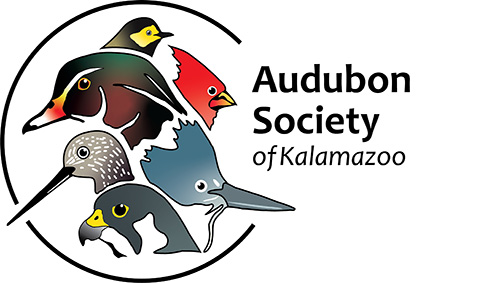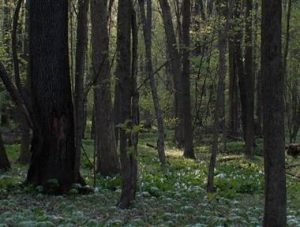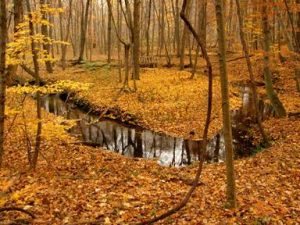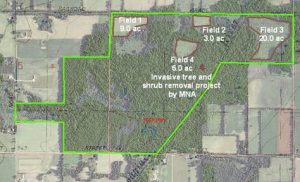Andy Bacon, the Stewardship Coordinator for MNA spoke to the Kalamazoo Area Wild Ones on Wednesday, February 26 to talk about MNA’s Conservation Priorities for Southwest Michigan. One of MNA’s largest projects is at Dowagiac Woods which has been enlarged to the north. Some of the new property contains farm fields which are now being reforested to provide more contiguous forested habitat for nesting neo-tropical birds. Once these trees become mature there will be 385 acres of mesic and floodplain forest with minimal fragmentation.
Andy states that these bird species nest in the United States and Canada but migrate south to spend the winter in Central and South America. Many of the forest inhabiting species require large blocks of forested habitat to successfully nest and fledge enough young annually to maintain population sizes. As forests are fragmented by clearing fields, roads, homes, utility lines, etc. and neo-tropical migrants attempt to nest in smaller fragmented forests, the rates of nest predation by species such as raccoons and opossums increase dramatically as do the rates of nest parasitism by brown-headed cowbirds who have benefited greatly from the fragmented man-made landscape today. Land protection and management of forest blocks and forest interior habitat benefits species of greatest conservation need such as the cerulean warbler, hooded warbler, and other warblers; vireos; and flycatchers. Some of the more common forest interior nesters to watch for include the wood thrush, and scarlet tanager.
In 2011 the Audubon Society of Kalamazoo (ASK) contributed funds towards the purchase of the northern tract of Dowagiac Woods by MNA. We are very pleased to see that reforestation of the old fields has so vigorously begun.





